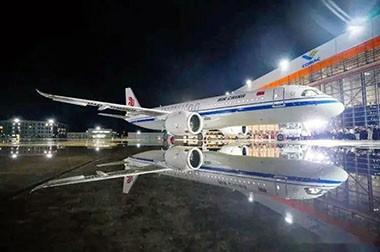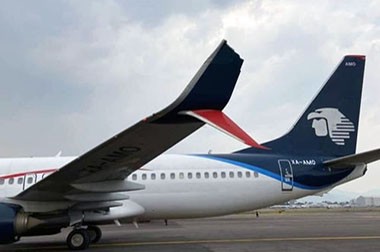What is the difference between 7075 and 6082 aluminum?
7075 aluminum is suitable for high-strength, lightweight extreme scenarios, while 6082 aluminum is more suitable for general structural parts and corrosion-resistant requirements. The choice should be based on a comprehensive evaluation of specific strength requirements, environmental conditions, and budget.
Both 7075 and 6082 aluminum alloys are widely used in various industries, but they differ significantly in terms of mechanical properties, corrosion resistance, weldability, and typical applications.
- For applications that require extremely high strength and fatigue resistance, such as aerospace and military fields, 7075 aluminum should be selected.
- For applications that emphasize corrosion resistance, weldability, and cost-effectiveness, 6082 aluminum should be selected, as it is very suitable for structural and marine applications.
Alu 6082 vs 7075
| Property | 7075 Aluminum | 6082 Aluminum |
| Yield Strength | 503 MPa | 345 MPa |
| Ultimate Tensile Strength | 510–572 MPa | 420 MPa |
| Corrosion Resistance | Lower (requires coating) | Higher |
| Weldability | Difficult | Excellent |
| Machinability | Challenging | Easy |
| Typical Applications | Aerospace, Military | Structural, Marine |
| Cost | Higher | Lower |
Alu 6082 vs 7075 Alloy Composition
Belongs to the 7xxx series (Al-Zn-Mg-Cu) alloy, with zinc as the main alloying element, supplemented by magnesium and copper. Its zinc content usually exceeds 5%, copper content is about 1.6%, and magnesium content is about 2.5%.
Belongs to the 6xxx series (Al-Mg-Si) alloy, with magnesium and silicon as the main alloying elements. Typical composition includes silicon 0.7%~1.3%, magnesium 0.6%~1.2%, and manganese 0.4%~1.0%.
Alu 6082 vs 7075 Mechanical Properties
Strength
- 7075 Aluminum: Ultra-high strength, tensile strength can reach 500~570 MPa, making it a typical aerospace-grade aluminum alloy with hardness close to low carbon steel.
- 6082 Aluminum: Medium strength, tensile strength is about 205~260 MPa. After heat treatment, the strength increases but is still not as high as 7075.
Elongation
7075 aluminum has lower elongation (about 10%), while 6082 aluminum has higher elongation (≥14%).
| Aluminum Alloy Type | Yield Strength (MPa) | Ultimate Tensile Strength (MPa) | Features |
| 7075-T6 | 503 | 510-572 | Excellent strength, suitable for high-stress applications, one of the strongest aluminum alloys. |
| 6082-T6 | 345 | 420 | A balance between strength and other properties, the strongest alloy in the 6xxx series. |
Alu 6082 vs 7075 Heat Treatment Characteristics
7075 Aluminum
Mainly strengthened through solution treatment + artificial aging (T6 condition), but the heat treatment process is complex and prone to residual stress.
6082 Aluminum
Can undergo T4 or T6 heat treatment, with a relatively simple process, but the strength increase is limited.
Alu 6082 vs 7075 Corrosion Resistance
- 7075 Aluminum: Relatively poor corrosion resistance, especially in saline or humid environments, requiring surface treatment (such as anodizing).
- 6082 Aluminum: Excellent corrosion resistance, suitable for direct exposure to general atmospheric or industrial environments.
| Aluminum Alloy Type | Corrosion Resistance Description |
| 7075 Aluminum | Compared to 6082, this alloy has lower corrosion resistance. Usually requires anodizing or protective coating to enhance its durability in corrosive environments. |
| 6082 Aluminum | Offers better corrosion resistance, especially in marine and outdoor applications, making it well-suited for structures exposed to harsh conditions. |
Alu 6082 vs 7075 Machining and Welding Performance
Alu 6082 vs 7075 Machining Performance
- 7075 Aluminum: Excellent machining performance, but poor cold formability, prone to cracking.
- 6082 Aluminum: Easy to cut, mill, drill, with balanced hot and cold working properties.
Alu 6082 vs 7075 Welding Performance
- 7075 Aluminum: Poor weldability, prone to hot cracking, usually requires special welding processes.
- 6082 Aluminum: Excellent weldability, suitable for conventional welding techniques (such as TIG/MIG).
Alu 6082 vs 7075 Weldability and Machinability
- 7075 Aluminum: Due to its tendency to crack during welding, it is generally considered difficult to weld. Additionally, its high strength makes machining more challenging.
- 6082 Aluminum: High weldability, easy to machine, ideal for applications requiring complex shapes and weld joints.
Alu 6082 vs 7075 Applications
7075 Aluminum
Used for high-stress components, such as aircraft structural parts, missile components, high-end sports equipment (bicycle frames, trekking poles), etc.
6082 Aluminum
Primarily used for structural engineering and transportation, such as bridge supports, ship decks, truck frames, and building doors and windows.
| Aluminum Alloy Type | Application Field |
| 7075 Aluminum | Due to its high strength, it is commonly used in aerospace, military, and high-performance automotive applications, such as aircraft structures, military vehicles, and racing components. |
| 6082 Aluminum | Suitable for structural applications such as bridges, cranes, and ship equipment, where corrosion resistance and weldability are crucial. |
Alu 6082 vs 7075 Cost and Process Complexity
- 7075 aluminum has a significantly higher cost due to its high proportion of alloying elements (such as zinc and copper) and strict casting processes. Due to its advanced performance and specialized applications, it is generally more expensive.
- 6082 aluminum has a higher casting temperature, but its process is mature, making it suitable for large-scale industrial production. It is generally more cost-effective and readily available, making it a popular choice for widespread applications.




